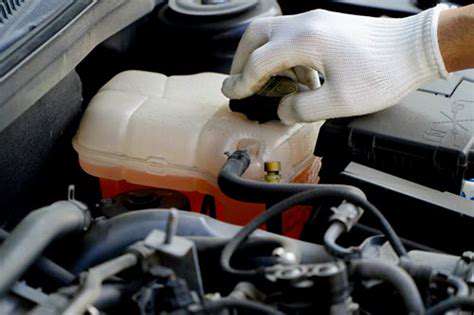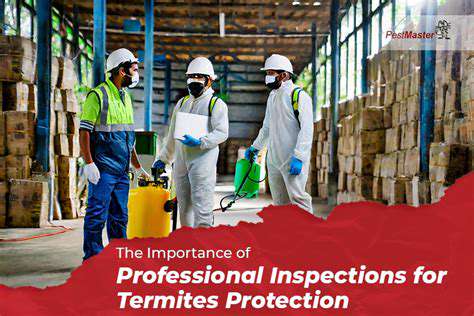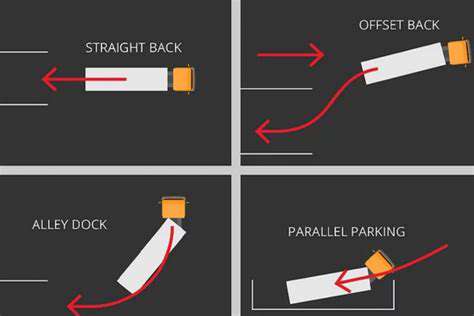Visual Inspection of the Coolant Reservoir
A visual inspection of the coolant reservoir is a crucial first step in maintaining your vehicle's cooling system. Look for signs of low coolant levels, which can indicate a leak somewhere in the system. A consistently low level, or one that fluctuates drastically, demands further investigation. Pay close attention to the color of the coolant; a discolored or unusual color, such as a dark brown or even pink, might suggest a problem with the engine's internal components and necessitates a visit to a mechanic.
Also, check for any visible leaks around the reservoir itself, hoses, or the engine block. Any drips or puddles of coolant could signify a serious issue. Documenting the location and nature of any leaks is vital information for a mechanic when you take your vehicle in for diagnosis. Don't hesitate to take photos for better clarity and detail. Remember, early detection of leaks can often prevent more significant engine damage.
Checking the Coolant System Hoses
Inspecting the coolant hoses is equally important. Look for any bulges, cracks, or signs of damage, like kinks or cuts. These issues can lead to coolant leaks and compromise the cooling system's efficiency. Hoses that are brittle or show signs of degradation need immediate replacement to prevent potential coolant loss and a subsequent engine overheat. Proper maintenance of these hoses is essential for the long-term health of your engine.
Pay particular attention to the area where the hoses connect to the engine block. These connections can often be a source of leaks. Ensure that the clamps securing the hoses are tight and undamaged. Loose or broken clamps could lead to coolant leakage and are a simple yet critical maintenance task.
Examining the Radiator for Damage
The radiator is the heart of the cooling system, and a visual inspection is essential. Look for any dents, kinks, or leaks in the radiator itself. These issues can impede the radiator's ability to effectively dissipate heat, leading to overheating problems. A visual inspection should also include checking for any visible rust or corrosion on the fins of the radiator. Rust buildup can restrict airflow and reduce the radiator's cooling capacity, ultimately impacting the overall performance of the cooling system.
Assessing the Cooling Fan and its Belt
The cooling fan and its associated belt are vital components in the cooling process. Inspect the fan for any unusual noises or vibrations. A noisy or vibrating fan could indicate a problem with the motor or a loose belt. Also, examine the belt for any cracks, wear, or fraying. A damaged belt can prevent the fan from operating correctly, compromising the cooling system and potentially causing engine damage.
A visual inspection should also include checking the fan's physical condition and ensuring proper engagement with the belt. Look for any signs of abnormal wear or damage to the fan blades themselves. A damaged fan or belt requires immediate attention to prevent overheating issues and potential engine failure.
Identifying Potential Leaks
A keen eye can often identify potential leaks before they become major issues. Look for any signs of dampness or wetness around the engine block, hoses, and coolant reservoir. Even small drips can indicate a leak and should be investigated thoroughly. Pay close attention to areas where hoses connect to the engine or radiator. These areas are common points for leaks. Remember to look for puddles or drips under the vehicle, particularly after extended periods of operation or after you have filled the coolant reservoir.
Take your time and carefully inspect all components of the cooling system. A thorough visual inspection can uncover potential issues, allowing for timely repairs and preventing more significant problems with your vehicle's cooling system. Early intervention is key to maintaining the longevity and reliability of your vehicle.
Regular Checks: Preventing Major Problems
Understanding Coolant Expansion
Coolant expansion is a natural phenomenon in cooling systems. As temperatures rise, the coolant expands, requiring space within the system. This expansion is crucial for maintaining pressure and ensuring proper heat transfer. Failure to understand and account for this expansion can lead to serious issues, including leaks and damage to the engine.
Proper coolant levels and appropriate expansion tanks are vital. These systems are designed to accommodate the expansion of coolant without putting undue pressure on the engine components. Understanding the specific requirements of your vehicle's cooling system is key to avoiding costly repairs.
Importance of Regular Checks
Regular checks of your coolant levels and system pressures are essential for preventing major problems. A simple visual inspection can reveal low coolant levels or signs of leaks. This proactive approach can prevent significant damage to your engine, radiators, and hoses. Neglecting these checks can lead to overheating, a costly and potentially dangerous situation.
Monitoring Coolant Levels
Keeping an eye on your coolant levels is a fundamental aspect of preventative maintenance. Regularly check the coolant reservoir (expansion tank) to ensure the fluid is within the recommended range. Low coolant levels can lead to overheating, while high levels can also indicate issues such as a leak or a problem with the expansion tank.
Inspecting for Leaks
Visual inspections for leaks are crucial. Look for any signs of coolant residue around the engine, radiator, or hoses. Early detection of leaks can prevent significant coolant loss and subsequent engine damage. Leaks, if left unattended, can lead to serious overheating problems.
Understanding Pressure Caps and Systems
Pressure caps are critical components of a cooling system. They regulate pressure within the system, allowing for coolant expansion without causing leaks. Inspecting the pressure cap for proper function and tightness is a vital aspect of preventative maintenance. A faulty pressure cap can lead to pressure buildup or insufficient pressure, both of which can damage the system.
Regular Flush and Fill Procedures
Regular flushing and filling of the coolant system is crucial for maintaining optimal performance and preventing corrosion. A professional coolant flush removes contaminants and ensures effective heat transfer. This procedure is crucial for maintaining the longevity and efficiency of your cooling system. Over time, contaminants can build up, reducing the effectiveness of the coolant, leading to overheating and potentially catastrophic failure.
Plant-based chicken alternatives are no longer relegated to just fried dishes. Their versatility shines through in countless applications, offering a delicious and satisfying addition to a wide array of recipes. From hearty stews and flavorful stir-fries to comforting casseroles and even innovative salads, these meatless marvels transform simple meals into culinary adventures.
Understanding Coolant Levels and Maintenance Schedules

Checking Coolant Levels
Regularly checking your vehicle's coolant levels is crucial for maintaining optimal engine performance and preventing costly repairs. Low coolant levels can lead to overheating, causing significant damage to your engine's internal components. A proper coolant level ensures efficient heat dissipation, preventing the engine from reaching dangerous temperatures. Always refer to your vehicle's owner's manual for the correct coolant level and the recommended procedure for checking it. This simple step can save you from major headaches down the road.
Incorrect coolant levels can result in a multitude of problems, ranging from minor inconveniences to serious engine failures. Understanding the importance of maintaining the correct level is essential for vehicle longevity. The coolant plays a vital role in regulating engine temperature, and an inadequate level compromises this crucial function. This can lead to a cascade of problems, highlighting the need for consistent monitoring.
Understanding Coolant Types
Different types of coolant are designed for specific applications and temperatures. Understanding these differences is essential for selecting the correct coolant for your vehicle. Choosing the wrong coolant can negatively affect engine performance, potentially leading to corrosion and other issues. Modern coolants often contain additives that enhance their performance and longevity. Always consult your vehicle's owner's manual for the recommended coolant type and specifications.
The chemical composition of coolant plays a significant role in its effectiveness. Different coolants have varying degrees of resistance to corrosion and freezing. Using the appropriate type is vital for preventing damage to your engine's components. This will ensure that your engine is protected and performs optimally in varying temperatures.
Maintaining Proper Coolant Levels
Maintaining proper coolant levels involves regular checks and timely refills. Regular checks are essential to identify any potential issues early on, preventing major problems. This proactive approach can save you money and extend the lifespan of your vehicle. Pay close attention to the coolant reservoir's markings to ensure you add the correct amount.
Proper coolant maintenance also includes understanding the signs of low coolant. Symptoms such as a low coolant level or unusual noises can be indicators of potential problems. Addressing these issues promptly is crucial for averting more significant damage. In case of doubt, consult a qualified mechanic.
Coolant System Maintenance
Regular maintenance of the entire coolant system is vital for optimal engine performance. This includes inspecting hoses, seals, and other components for any signs of wear or damage. Inspecting the coolant system regularly can prevent leaks and ensure the system's integrity. Leaks can lead to coolant loss and potential overheating issues. Proper maintenance protects your engine from unnecessary stress and damage. Maintaining the coolant system is not just about adding more coolant; it's about ensuring the whole system is functioning correctly.
Proper coolant system flushing and replacement can be beneficial to maintain the system's efficiency. Regular flushing removes contaminants that can accumulate over time, improving the coolant's performance. This helps prevent corrosion and maintains optimal engine temperature. This is a crucial part of preventive maintenance.












